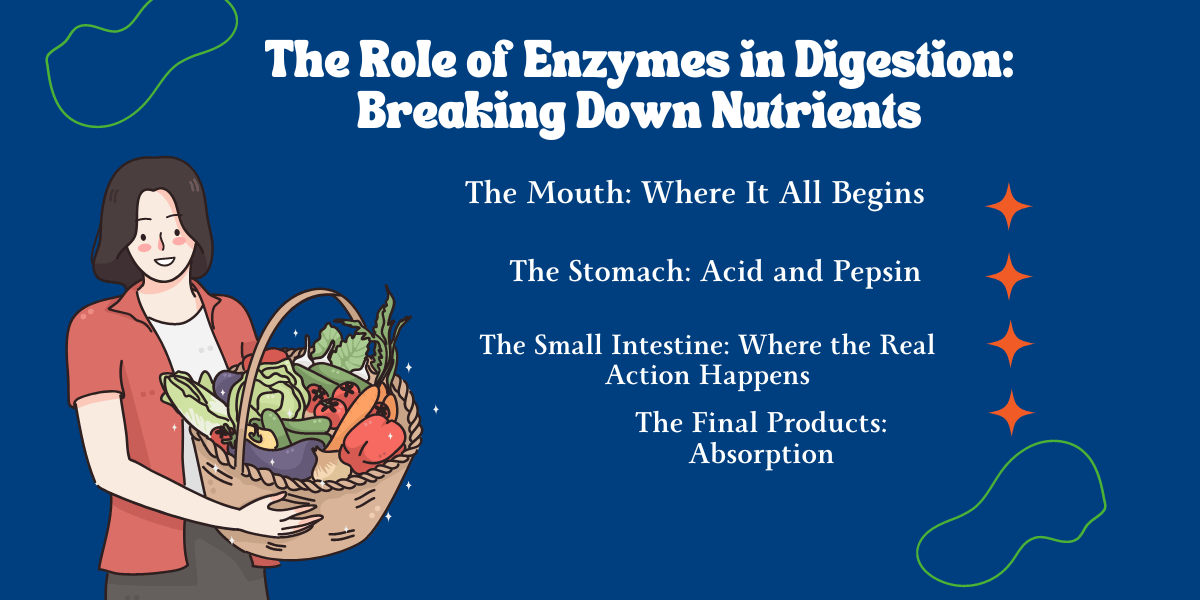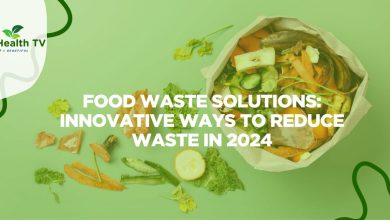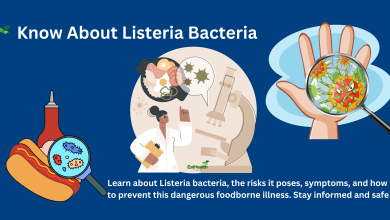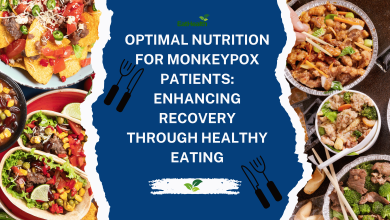The Role of Enzymes in Digestion: Breaking Down Nutrients
Unveiling the Enigmatic World of Digestive Enzymes: A Journey from Food to Nutrients
 Digestion is a complex and fascinating process that transforms the food we consume into the energy and nutrients our bodies need to function. At the heart of this process are enzymes—remarkable biological molecules that act as catalysts to break down food into its constituent parts. In this blog post, we will explore the critical role enzymes play in digestion, from the moment food enters our mouths to its absorption in the small intestine.
Digestion is a complex and fascinating process that transforms the food we consume into the energy and nutrients our bodies need to function. At the heart of this process are enzymes—remarkable biological molecules that act as catalysts to break down food into its constituent parts. In this blog post, we will explore the critical role enzymes play in digestion, from the moment food enters our mouths to its absorption in the small intestine.
The Mouth: Where It All Begins
Digestion begins in the mouth, where the first enzyme action takes place. Salivary glands secrete an enzyme called amylase, which starts the breakdown of carbohydrates into simpler sugars like glucose. This process is why starchy foods like bread and potatoes taste slightly sweet after prolonged chewing.
The Stomach: Acid and Pepsin
As chewed food travels down the esophagus, it enters the stomach—a hostile environment with its strong acidic juices. Here, the enzyme pepsin is secreted. Pepsin’s role is to break down proteins into smaller peptides. The acidic environment created by the stomach’s hydrochloric acid activates pepsin, allowing it to perform its protein-dissolving duties effectively.
The Small Intestine: The Centre of the Action
The majority of digestion and nutrient absorption occur in the small intestine. Here, several digestive enzymes come into play:
Pancreatic Amylase:
The pancreas secretes amylase, similar to salivary amylase but more potent, to continue the breakdown of carbohydrates.
Pancreatic Lipase:
This enzyme tackles fats, breaking them down into fatty acids and glycerol. The breakdown of fats is crucial for the absorption of fat-soluble vitamins (A, D, E, and K) and the overall digestion of lipids.
Trypsin and Chymotrypsin:
These pancreatic enzymes further break down proteins into smaller peptides.
Peptidases and Disaccharidases:
These enzymes on the brush border of the small intestine’s lining help. They beak down peptides and disaccharides (double sugars) into their simplest forms—amino acids and monosaccharides.
The Final Products: Absorption
The end result of enzyme-driven digestion is a mix of amino acids, monosaccharides, fatty acids, vitamins, minerals, and other micronutrients. These end products are small enough to be absorbed through the intestinal lining into the bloodstream, where they are transported to cells throughout the body for energy and growth.
Enzymes in Health and Digestive Disorders
Enzymes are vital not only for normal digestion but also for maintaining overall health. Digestive disorders, such as lactose intolerance or pancreatic insufficiency, can disrupt the delicate balance of enzyme production and lead to digestive discomfort.
In such cases, enzyme supplements may be recommended to aid in the digestion of specific nutrients, alleviating symptoms and improving nutrient absorption.
Conclusion
Enzymes are the unsung heroes of the digestive process. They work tirelessly to break down the foods we consume into their essential components. They ensuring that our bodies can extract the nutrients they need to thrive. Understanding the role of enzymes in digestion not only sheds light on this intricate biological process but also underscores the importance of balanced nutrition for our overall well-being.




